Simple, affordable, and quiet – that’s Kubota’s new workhorse range in a nutshell
Ask any farmer what they look for in a tractor and the answer would almost always be along the lines of, “a no-fuss unit that is simple to operate and gets the job done.”
Often, farm machinery manufacturers try to outdo each other by adding a plethora of technology into their products. Useful, if they work, but when they don’t it creates a world of pain for farmers, who simply cannot afford any downtime.
Kubota champions simplicity with its range of machinery and that philosophy is apparent in its latest M5-1 ROPS tractor range.
Released in Australia in late 2020, the M5-1 ROPS models complement the existing M5-1 cabin tractor line-up that has been on the market for a couple of years.
Most of the controls, power and functions on both ranges are the same, with the main difference being the absence of a cabin in the latest release.
While cabin tractors certainly have their place on Aussie farms, especially where the weather could be extreme, ROPS tractors are equally popular for several reasons, said Kubota Australia’s product manager, Konstantin Blersch.
“One, you don’t want to spend another $10,000 roughly for a cabin,” he said. “Also, you might need that easy and open communication with people around you in a vegetable growing enterprise, for example.
“The other reason is really simplicity for people who don’t need air-conditioning and climate control, because if that fails a cabin is no good either. So the simplicity aspect of it is what drives people to a ROPS tractor.”
Kubota’s M5-1 ROPS range features four models – the Standard configuration with loader function offering 90 and 103hp, and a Narrow configuration for work in orchards and vineyards offering 90 and 103hp.
SEE ALSO:
Kubota RTV520 review
Kubota RTV-X900 Review
2020 Kubota RTV-XG850 Sidekick Review
Power and transmission
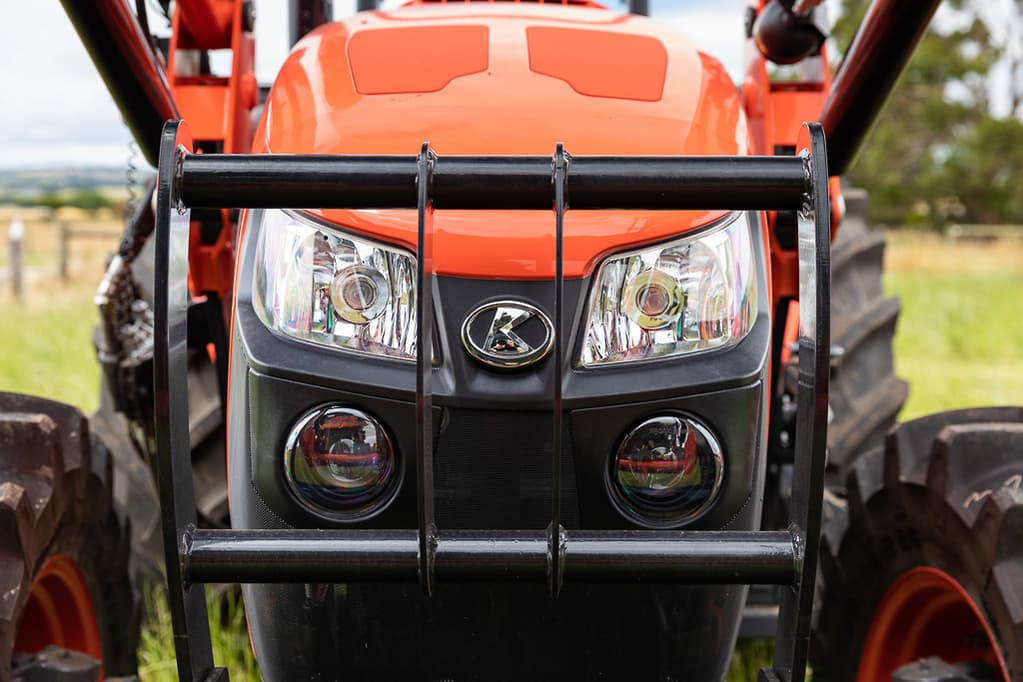
Like its cabin counterparts, the M5-1 ROPS units feature Kubota’s V3800 CR Tier 4i engine – a 3.8-litre, four-cylinder, common-rail turbo-diesel with particulate filter.
Kubota said its engine technology has been redesigned to give maximum horsepower at the lower engine speed of 2400rpm. Put simply, the engine doesn’t have to work as hard to power the tractor and implement, which translates to lower fuel consumption and longer machinery life.
The particulate filter removes harmful particles from the exhaust and is easy to maintain, Kubota said.
The transmission setup on the M5-1 ROPS series has been borrowed from Kubota’s tried-and-tested M40 tractor range, Blersch said.
The Standard model has an 18-speed transmission with six gears and three ranges, whereas the Narrow configuration features the same setup, except for an additional Dual Splitter function which effectively offers a total of 36 speeds for specialist work.

“At the push of a button, you switch that gear and you’re either up a notch or down a notch by about 1km/h in speed,” Blersch said.
“That allows operators to more accurately maintain a certain speed without having to change the engine speed.”
This is particularly useful in specialist operations where travelling at a constant speed is crucial, such as spraying.
Comfort and drive
When I hopped on the M5-1 ROPS tractors, I was told that if you know how a manual car works, you will know how to get these going. Now, I have not driven a manual car in ages, but I needed no more than five minutes of a rundown to successfully start the tractor up and get it going.
That’s how good tractors should be. Operators should not need to scratch heads, call on Google or understand rocket science in order to figure out how to operate a tractor.
A shuttle shift lever makes manoeuvring the tractor quick and easy, which is useful in a loading application, for example. At the quick flick of a lever, operators can switch from forward to reverse in an instant while travelling at the same set speed, all without having to touch the clutch.
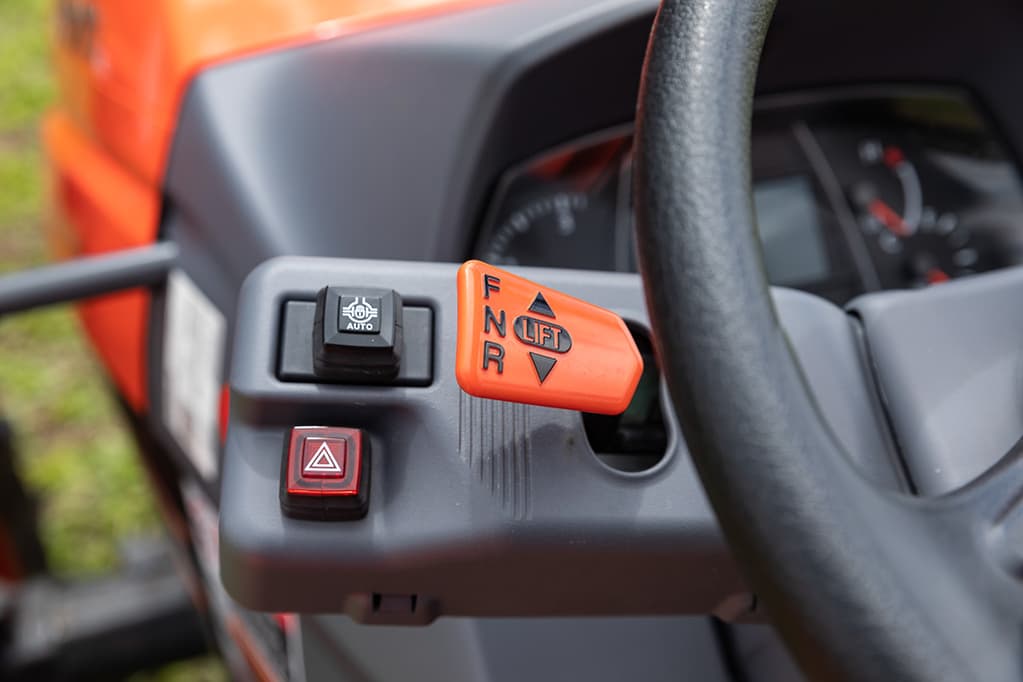
The controls on both configurations are mostly the same except for the dual speed splitter on the Narrow model, and changing gears is via a gear stick similar to what one would find in a manual car.
The ergonomic layout sees all the various controls fall easily to hand.
Comfort was enhanced by a quality air suspension seat, which takes out the bounce as operators traverse bumpy paddocks.
However, upon reaching a certain speed, I noticed both models seemed to bounce a fair bit which, if prolonged, can make the ride seriously uncomfortable and potentially hazardous for operators. I wasn’t sure if it was just me weighing less than what Kubota designed the tractors for, or that some setting wasn’t quite right.
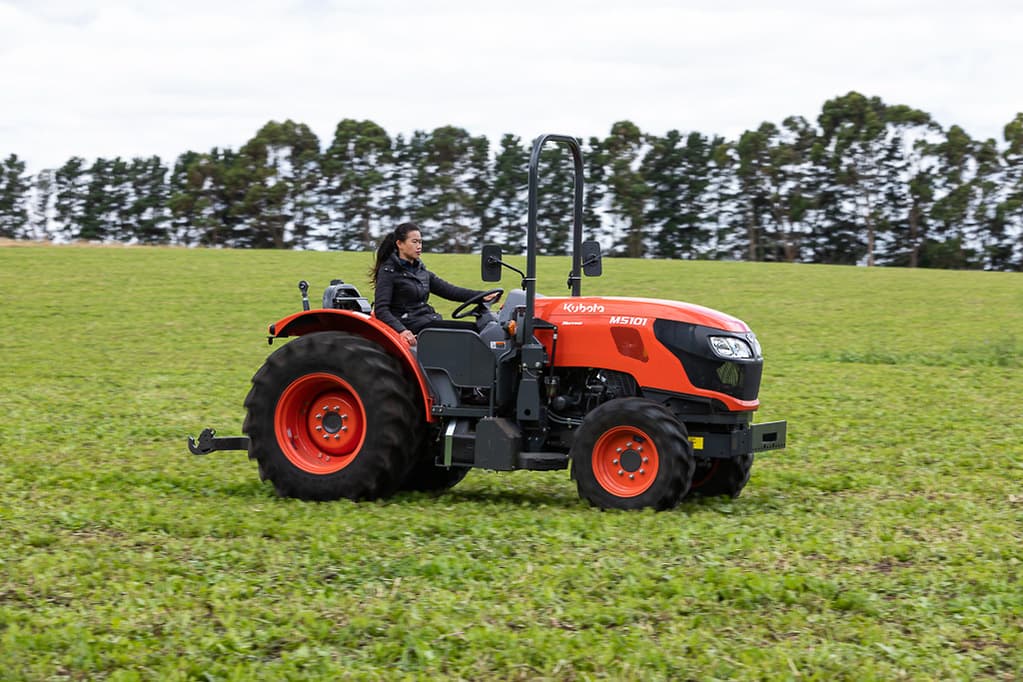
When I raised this with Blersch, he mentioned it could be a tyre pressure issue and he urged operators to always check the pressure to ensure the tyres are fit for the application. In the paddock, tractor tyres should always have a lower pressure than when on roads. Having a lower tyre pressure when working in paddocks also helps farmers lower fuel consumption.
In any case, tractors aren’t designed to be speed machines, so in a normal, day-to-day setting they shouldn’t present any problems to operators.
The tractors were also surprisingly quiet to drive, despite them being conventional diesel tractors. Some tractors, especially older models, emit thunderous roars upon starting up and can make a lot of noise when travelling, but these models are very pleasant on the ears which is helpful when operators need to spend long hours behind the wheel.
Manoeuvrability
Kubota has also enhanced the manoeuvrability of the M5-1 ROPS range, which is important and especially so on the Narrow model when navigating rows of trees or vines.
“On these M5 models, we use a bevel gear front axle which means there isn’t a U-joint in the final drive between the axle and the hub,” Blersch said.
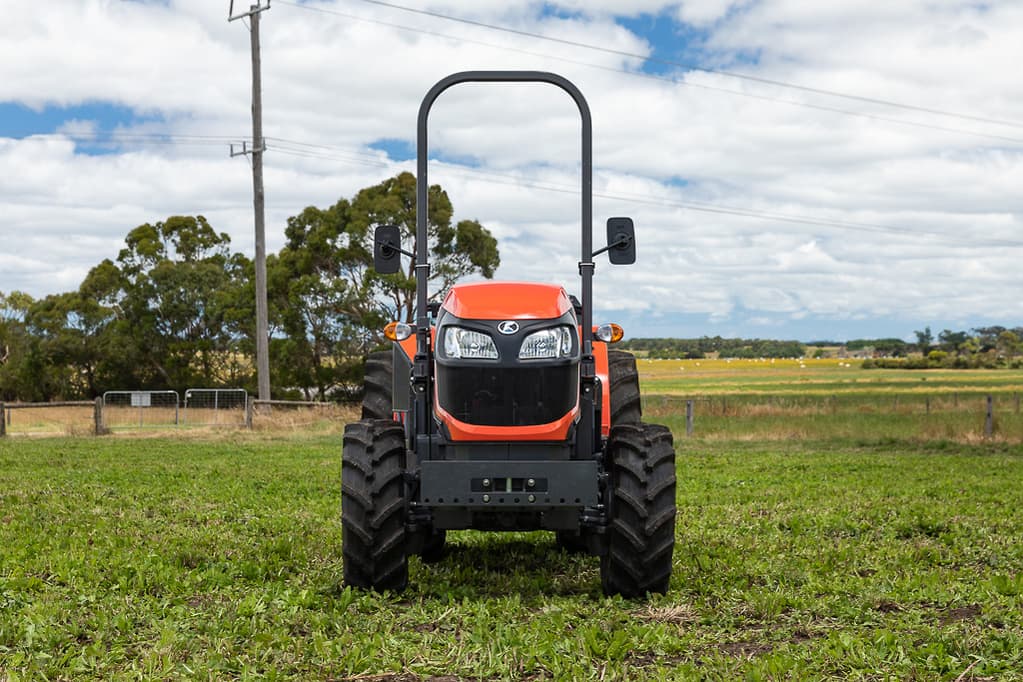
“That means you can turn the wheels really tight and still have it driving through the four-wheel drive.
“On the Narrow we have something similar to what we have on the cabin tractors, which is a bi-speed turn. So at the push of a button, the front wheels spin a little bit faster and swing the tractor hard around the corner.”
With a width of about 1400mm, the M5-1 Narrow ROPS tractors can fit easily and comfortably between rows.
Both Standard and Narrow models also feature a lower height compared to the cabin models, allowing them to work in operations with height restrictions such as orchards. They can also comfortably fit in sheds with lower roofs, for example.
Hydraulics and PTO
Both the Standard and Narrow models have a 60l/min hydraulic capacity. The M5111 standard tractor I tested had a Land Pride box scraper attached at the rear and lifting and lowering it was easy thanks to the quick hydraulic response.
Operating the front loader was also a breeze due to the fast response times.
Lift capacity on the Standard model is a generous 3200kg while the Narrow can lift 1500kg at the rear.
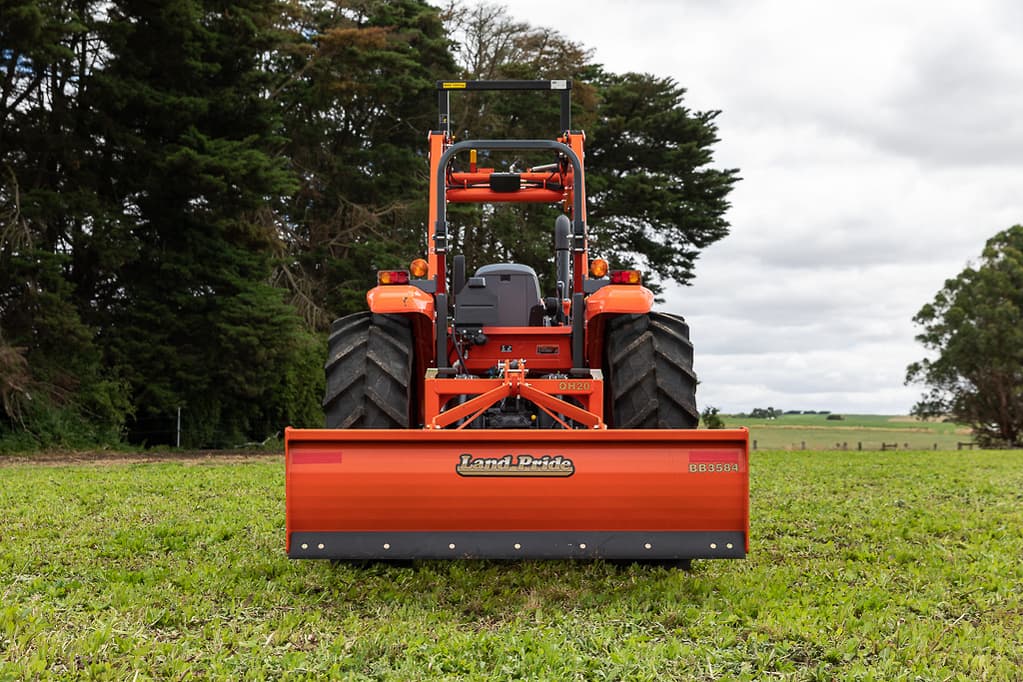
Standard on both models are PTO speeds of 540 and 540 Eco RPM, sufficient for running a wide variety of implements ranging from mowers to sprayers and balers. If required, customers can opt for a 1000rpm shaft for more demanding implements.
Last words
If anyone is looking for a low-maintenance, affordable and sturdy tractor to get jobs done around the farm, Kubota’s M5-1 ROPS series ticks all the boxes.
Not to mention that it looks pretty good too, with its sleek new lights and Kubota’s signature bright orange paint job that will jazz up any shed or farm.

The new M5-1 ROPS series retails from around $60,000, which is significantly less than any cabin counterpart.
Sometimes, or most times, simple is best. No cab? No problem!

